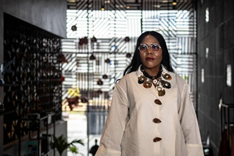African fashion is experiencing unprecedented global recognition, with industry leaders projecting the continent’s luxury fashion market could reach $500 million annually by 2027, driven by innovative designers reshaping international style narratives.
Reni Folawiyo’s pioneering “Afro-lux” concept through Lagos-based Alara concept store exemplifies this transformation, creating economic opportunities for over 200 African designers while positioning West African fashion alongside established global brands.
The fashion revolution extends beyond aesthetics, generating substantial economic impact across textile manufacturing, retail, and cultural tourism sectors. Industry data suggests African fashion exports increased 35% in the past two years, with Nigeria, Ghana, and Senegal leading production growth.
“We’re not just creating beautiful garments—we’re building an ecosystem that celebrates African creativity while generating sustainable economic value,” explained Folawiyo, whose Alara store showcases designs ranging from $210 dresses to $2,000 furniture pieces.
International collaboration proves crucial to market expansion, with recent partnerships between African designers and major museums in New York and Los Angeles opening new revenue streams through exhibitions and pop-up stores. These collaborations generate estimated revenues of $50 million annually for participating designers.
The diaspora market represents significant growth potential, with African fashion weeks in New York, London, and Paris attracting global buyers and generating over $75 million in direct sales annually. Celebrity endorsements, particularly from music industry figures, have amplified brand visibility and consumer demand.
Technology integration enhances market reach, with e-commerce platforms enabling direct-to-consumer sales that bypass traditional retail markups. African fashion brands report 60% of international sales now occur through digital channels, improving profit margins significantly.
Manufacturing capacity expansion addresses growing demand, with textile production facilities in Nigeria, Kenya, and Ghana creating 45,000 new jobs over the past three years. Investment in local production reduces dependency on imported materials while ensuring quality control.
Training and skills development programs support sustainable industry growth, with fashion schools across Africa reporting 40% enrollment increases. These institutions partner with international fashion houses to provide students with global market exposure and technical expertise.
The sector’s growth trajectory suggests African fashion will capture 5% of the global luxury market by 2030, representing a $2.5 billion opportunity that transforms creative expression into economic empowerment for millions across the continent.
